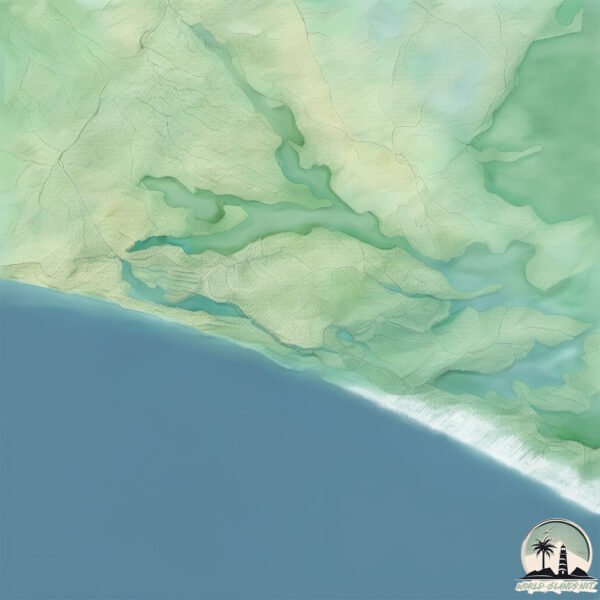Welcome to Hindmarsh , a Dry island in the Great Australian Bight, part of the majestic Indian Ocean. This guide offers a comprehensive overview of what makes Hindmarsh unique – from its geography and climate to its population, infrastructure, and beyond. Dive into the details:
Geography and size of Hindmarsh
Size: 51.9 km²Coastline: 46 kmOcean: Indian OceanSea: Great Australian BightContinent: Oceania
Hindmarsh is a Medium Island spanning 52 km² with a coastline of 46 km.
Archipel: –
Tectonic Plate: Australia – A major tectonic plate covering Australia, New Zealand, and parts of the Indian and Pacific Oceans, known for its relative stability and occasional seismic activity.
The geographic heart of the island is pinpointed at these coordinates:
Climate and weather of Hindmarsh
Climate Zone: DryClimate Details: Cold Semi-Arid (Steppe) ClimateTemperature: Cold
Climate Characteristics: Characterized by hot summers and cold winters, this climate is typically found on the edges of continental zones. It receives sufficient precipitation to avoid desert conditions.
Topography and nature of Hindmarsh
Timezone: UTC+09:30Timezone places: Australia/AdelaideMax. Elevation: 20 m Mean Elevation: 6 mVegetation: WetlandTree Coverage: 19%
The mean elevation is 6 m. The highest elevation on the island reaches approximately 20 meters above sea level. The island is characterized by Plains: Flat, low-lying lands characterized by a maximum elevation of up to 200 meters. On islands, plains are typically coastal lowlands or central flat areas.
Dominating Vegetation: Wetland
Vegetation: 7 vegetation zones – Very Highly Diverse Island
Infrastructure and Travelling to Hindmarsh
Does the island have a public airport? no .
Does the island have a major port? no .
The mean population of Hindmarsh is 22 per km². Hindmarsh is Gently Populated. The island belongs to Australia .
Continuing your journey, Mundoo is the next notable island, situated merely km away.
Marina Hindmarsh Island Overview - 2015
THE MARINA HINDMARSH ISLAND Enjoy this peaceful little video for less than a cup of coffee! A stunning aerial overview of the ...
Marina Hindmarsh Island Overview - 2015
THE MARINA HINDMARSH ISLAND Enjoy this peaceful little video for less ...
THE MARINA HINDMARSH ISLAND Enjoy this peaceful little video for less than a cup of coffee! A stunning aerial overview of the ...
Hindmarsh Island, South Australia DJI SPARK DRONE
Hindmarsh Island, South Australia DJI SPARK DRONE.
Hindmarsh Island, South Australia DJI SPARK DRONE.
Hindmarsh Island, SA - First visit
Australia is classified as Developed region: nonG7: Developed economies outside of the Group of Seven, characterized by high income and advanced economic structures. The level of income is High income: OECD.
News – Latest Updates and Headlines from Hindmarsh
Stay informed with the most recent news and important headlines from Hindmarsh. Here’s a roundup of the latest developments.
Please note: The data used here has been primarily extracted from satellite readings. Deviations from exact values may occur, particularly regarding the height of elevations and population density. Land area and coastline measurements refer to average values at mean high tide.

